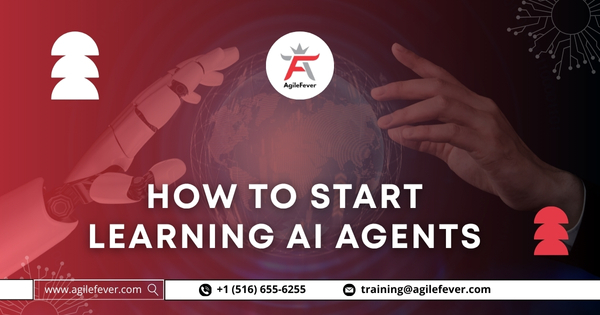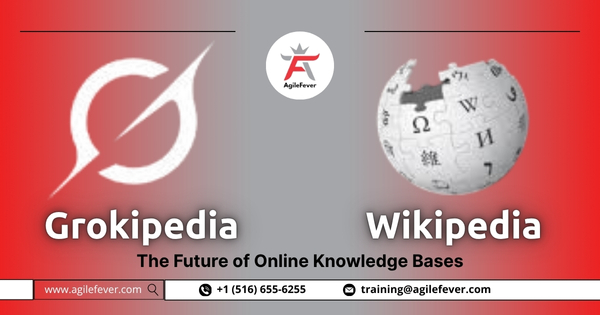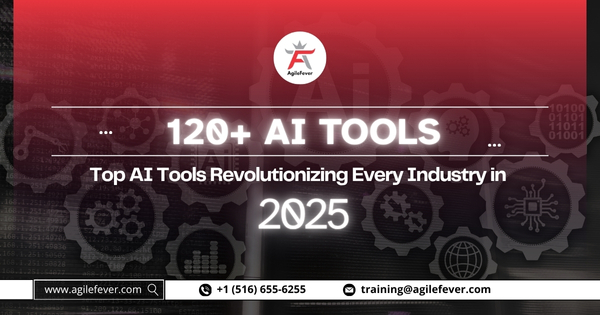AI agents are becoming one of the most important skills to learn before 2030. They combine reasoning, automation, and data processing to perform tasks that once needed human involvement. From coding and planning to writing and analysis, these agents can think, act, and improve through interaction. Experts predict that over 50 million new jobs will depend on AI skills by 2030, yet most people will miss out because they do not know where to begin. Learning AI agents is not about jumping into tools but about building understanding step by step. This roadmap breaks the entire journey into three clear stages: fundamentals, core agent design, and real-world deployment. It shows exactly how to move from simple prompts to production-ready systems that can plan, reason, and execute tasks on their own.
Why You Need a Structured Roadmap to Learn AI Agents
Learning AI agents without a plan often leads to confusion and frustration. There are too many tools, terms, and tutorials that only explain fragments of the process. A structured roadmap gives you a clear order of learning so you understand what comes first and why it matters. AI agents are built in layers: data, reasoning, memory, and real-world action. Each level depends on the one before it. By following a proper path, you avoid wasting time on advanced steps before mastering the basics. This approach helps you build practical skills, connect concepts naturally, and reach the point where your agents work reliably in real situations.
Level 1 – GenAI & RAG Basics
Before building your first AI agent, you need to understand the foundation that supports it. This stage focuses on how large language models think, how they retrieve data, and how you can guide their responses with accuracy. Every advanced AI system starts here. These are the skills that help you move from curiosity to real development. Once you learn these basics, the rest of the process becomes far easier to follow and apply in practical settings.
What GenAI Actually Is
Generative AI is a system that produces text, images, or code by understanding patterns in data. It powers chatbots, code assistants, and intelligent writing tools. Learning how it generates content gives you control over what it creates and how it behaves.
How LLMs Are Trained and Used
Large Language Models are trained on massive text datasets that teach them to predict the next word in a sentence. Knowing how these models are trained helps you understand their limits, strengths, and ideal use cases.
Prompt Writing That Actually Works
Prompts are how you communicate with models. Writing strong prompts means giving context, role, and structure so the model responds exactly as needed. Practice makes this skill sharper and more reliable.
Output Control with Temperature, Top-p, and Tokens
These are settings that control the variety and length of a model’s output. Temperature affects creativity, top-p manages probability spread, and tokens define response size. Learning to adjust these settings helps you get consistent results.
How to Chunk and Clean Data for LLMs
Models work best when the data is clean and structured. Chunking means splitting large files into readable sections for processing. Cleaning removes noise, symbols, or extra spaces so the model can understand data clearly.
RAG Explained in Plain English
Retrieval-Augmented Generation (RAG) allows models to pull information from external data sources when they don’t know the answer. It’s like giving your model access to a private knowledge base for better accuracy.
Vector Databases Like Pinecone and Chroma
These databases store information as numerical vectors that capture meaning. They help your agent find similar topics or ideas quickly when retrieving context.
LangChain, LlamaIndex, and Direct APIs
These frameworks connect models with tools and data. They make it easier to organize workflows, access databases, or trigger external functions.
Let LLMs Use Tools (Code, Search, APIs)
When a model can use tools, it stops being a passive responder and becomes an active problem solver. It can search online, run code, or send emails using external APIs. This step turns a simple model into a working agent.
Level 2 – Core Agent Skills
Once you know how large language models and data retrieval work, it’s time to make your agent think, plan, and act. This stage is where static systems turn into living workflows. You learn to give your agent structure, memory, and awareness so it can complete tasks without constant supervision. These skills help you move from simple automation to intelligent behavior that adapts to goals and situations.
What AI Agents Actually Are
AI agents are systems that can reason, plan, and act based on a set goal. They combine logic, memory, and decision-making to get things done. The better they understand context, the more capable they become.
Agent Frameworks: CrewAI, AutoGen, LangChain Agents
These are platforms that make it easier to build and manage agents. CrewAI handles teams of agents working together. AutoGen focuses on communication and planning. LangChain connects agents with tools and memory.
Build Your First Agent
Start small. Create a basic agent that can answer questions, summarize text, or complete a workflow. Understanding the process of connecting reasoning, data, and tools is the first real step toward mastery.
Agent Workflows – How They Think and Act
Agents follow a repeatable loop: receive input, process it, act on it, and review results. This cycle helps them stay consistent and self-correct when needed. It’s the foundation of autonomous reasoning.
Agent Memory – Making It Stick
Adding memory allows agents to remember past tasks and outcomes. With it, they can continue conversations, recall preferences, and improve their future performance. This turns a simple tool into a learning system.
Agent Evaluation – Tracking Performance
Every agent needs to be tested. You measure accuracy, reliability, and decision quality. This helps identify gaps and make sure the system stays dependable.
Multi-Step Reasoning – Logical Sequences
Teach your agent to handle complex problems by breaking them into smaller steps. This makes it more efficient and helps it reason clearly instead of guessing answers.
Multi-Agent Systems – Collaboration Between Agents
Sometimes one agent is not enough. Multi-agent systems let several agents work together, each focusing on specific roles such as planning, execution, or review. This teamwork approach improves outcomes.
Agentic RAG – Smarter Retrieval Systems
Combining retrieval and reasoning allows agents to fetch the right data and use it meaningfully. It reduces mistakes and makes responses more grounded in facts.
Action Planning and Retries
A smart agent knows how to recover from failure. Planning and retry logic ensure it can adjust its approach until the goal is achieved.
Safety Layers and Guardrails
These protect both users and systems. Filters, factual checks, and rules help agents stay accurate and prevent misuse. Responsible design keeps automation safe and trustworthy.
Level 3 – Real-World Agent Deployment
This stage focuses on turning your AI agents into reliable systems that people can actually use. It is where theory meets production. You learn how to connect agents with real tools, automate workflows, and keep them running safely and efficiently. By the end of this level, your agent should be able to work independently, handle multiple tasks, and deliver results with minimal supervision.
Real-World Integration – Connect Agents to Slack, Notion, Gmail
Linking agents with everyday tools lets them perform real tasks such as drafting emails, summarizing meetings, or tracking updates. With proper integration, your agent becomes a helpful digital assistant that fits smoothly into existing workflows.
Autonomous Loops – Self-Running Agents
Once agents are set up, they can monitor and complete tasks automatically. By running in loops, they check data, take action, and update records without manual input. This creates true automation that saves time and effort.
Custom Toolkits – APIs and Python Functions
Adding your own tools gives agents new abilities. You can connect them with APIs, databases, or Python scripts to process data, generate reports, or analyze results. This customization makes your agent more capable and useful for real business work.
Optimize Performance – Speed, Cost, and Reliability
Every production system needs fine-tuning. Learn how to manage token use, control processing time, and reduce errors. This ensures your agent performs efficiently and remains cost-effective for long-term use.
Deploy to Production – Real User Access
Deployment is when your agent leaves the lab and meets the world. You can host it on cloud platforms like AWS, Hugging Face Spaces, or Vercel. Testing, monitoring, and version control keep it stable and ready for continuous improvement.
Common Mistakes Beginners Make
Starting your journey with AI agents can be exciting, but it is also easy to take the wrong steps early on. Many learners rush into advanced frameworks or complex projects without building the right foundation first. A few small mistakes can slow progress, make results unreliable, or lead to frustration. Knowing what to avoid helps you learn faster and build systems that actually work in practice.
Here are some of the most common mistakes to watch out for:
- Skipping the basics: Jumping straight to advanced tools like LangChain or CrewAI without understanding how LLMs and RAG function.
- Poor data handling: Using messy or unstructured data that confuses the model and weakens output quality.
- Weak prompts: Writing unclear or vague prompts that lead to random and inconsistent results.
- Ignoring evaluation: Not testing agent performance, accuracy, or logic before moving to deployment.
- Overcomplicating projects: Trying to build multi-agent systems too early instead of starting small.
- No safety checks: Forgetting filters, guardrails, or factual validation steps that keep agents reliable.
- Neglecting optimization: Overlooking speed, cost, and error handling once the system starts running.
Learning from these early missteps helps you focus on the right process: master the fundamentals, build small working systems, and only then move toward automation at scale.
Conclusion
AI agents are transforming how people work and solve problems. Learning them step by step is the best way to build lasting skills. This 3-level roadmap helps you move from understanding GenAI and RAG to developing agents that think, plan, and act independently. Each level adds practical knowledge you can apply right away. The goal is not just to follow trends but to create tools that make real impact. Whether you are a student or professional, this path gives you structure, clarity, and purpose. Join the AgileFever AI Masterclass to start building real-world agent skills today.



